The DMV of Moscow has recognized the inefficiency of buses
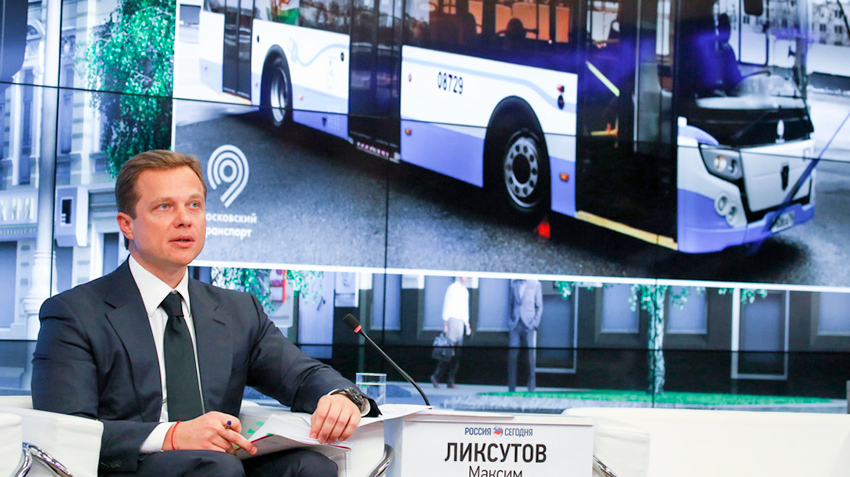
23.12.2019
Despite the low efficiency of the buses, their introduction will continue

The capital's mayor Sergei Sobyanin, in recent years, constantly talking about sustainability and the benefits of buses compared with other above-ground public transportation and executes a program of mass purchases, and, according to this concept already with 2021 Moscow needs to go fully battery-powered vehicles instead of diesel and gas engine, and even more so hated the mayor and his team trolleybuses.
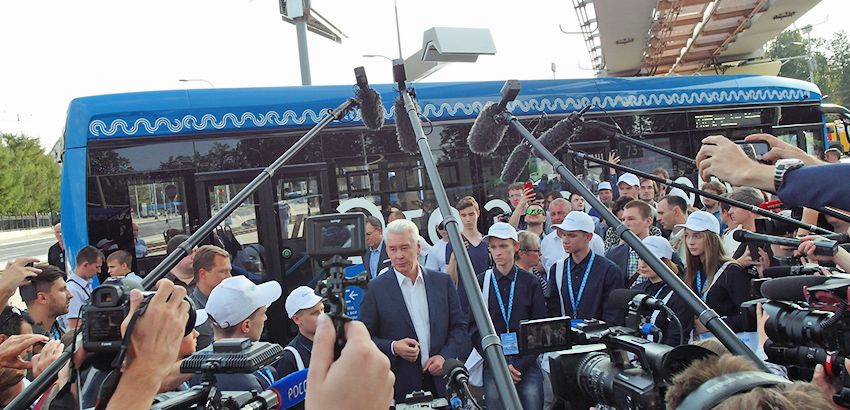
Mayor Sergei Sobyanin gives an interview at the launch of the Moscow bus 01.09.2018
However, as the saying goes: it was smooth on paper, Yes forgot about the ravines. A Telegram-channel "Base" was an internal letter from the Department of transport to the Ministry of transport. In this letter, known for its ardent support of the theme of buses, Deputy mayor and the head of diptrans Maxim Liksutov recognizes that this type of urban transport in many articles still loses not only diesel and NGV buses and the tram.
The bus is released to the streets of the capital since September 2018
Such a conclusion radically at odds with earlier public statements Maxim Liksutov in the spirit: "the electric bus is the future of surface transport, and the international community supports us in this".Letter he said was sent to the Director of the Department of state policy in sphere of automobile and city passenger transport of Ministry of transport Alexey Bakirey at the end of September. It details the efficiency of all ground public transport sue "Mosgortrans".
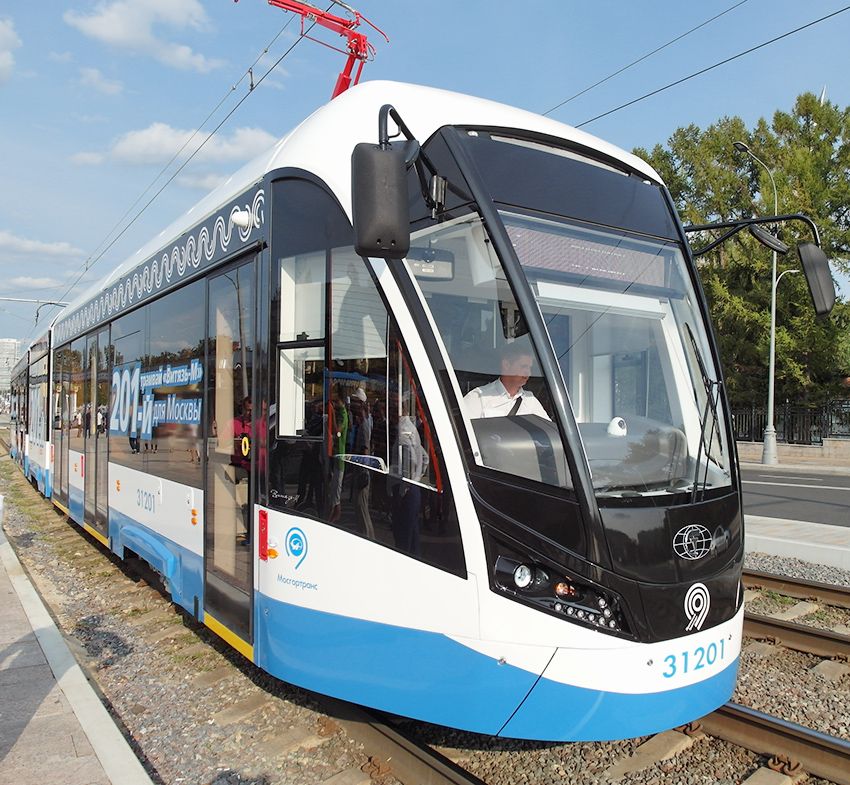
The most economical form of urban land transport and logistics Moscow – articulated tram model 71-931М "Vityaz-M"
So the text of the document: the most efficient urban transport tram called... (the newest model 71-931М "Vityaz-M") which was the lowest operating costs – a total of ₽1.2 per passenger-kilometer (PKM) per regular passenger seat. In second place NGV buses (model LiAZ-529271) with ₽1.21 per PKM. However, the "dirty" diesel buses (modern models NefAZ-5299 and LiAZ-529265), this figure is ₽of 1.31. Well, the green bus was on the penultimate place with a long way of 1.59 on the control panel. On this background even "archaic" trolley plays not-so-serious – ₽of 1.67 on the RMB.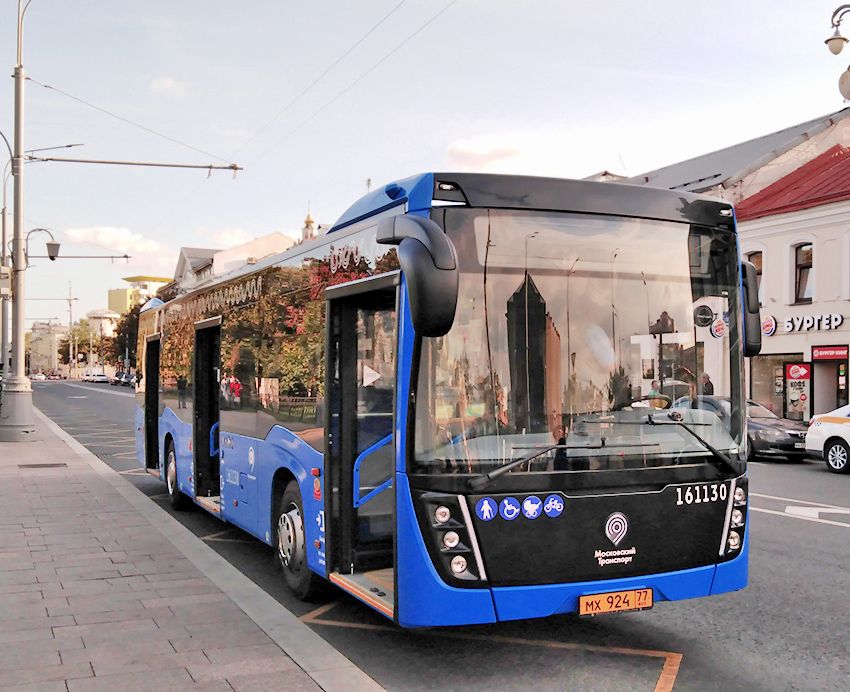
The second economy ground transportation – city 12-meter diesel bus LiAZ-529271
However, in a personal blog, the Mayor stressed that: "electric Buses put to the capital of the domestic car manufacturers KAMAZ and GAZ. For service contracts they are responsible for the operation of rolling stock and charging stations for 15 years. The total cost of its operation is 10% lower than the trolley, and life — 50% longer than the bus".So, here is the report of capital diptrans in the government, in contrast, refutes this statement, saying that by the middle of this 15-year life of the bus will need to replace it the most expensive consumable part, i.e. elektrobatarei that will cost (and that the capital budget of computers.) at least ₽9.45 million the Cost of the bus is ₽34 million
In this case, and the mayor, and the head of diptrans like descending the circumstance, only the cost of replacing batteries in electric buses is almost comparable to the price of conventional diesel or natural gas-powered buses, which cost about ₽13 million, Respectively, of the trolley cost the city budget of ₽18 million (50% of the price of the bus) and tram — in ₽104.3 million However, the streetcar Seating capacity of more than twice the rate of bus and bus – 185 compared to 85 passengers, respectively.

The cost of maintenance also show the high cost of new-fangled mode of transport. So, on conventional buses "Mosgortrans" annually spends at ₽879,6 thousand; LPG – order ₽1 million, and the trolley – ₽795,7 thousand respectively. But the annual electric bus maintenance cost ₽2 million, more expensive than the tram service which requires ₽3.47 million
The DMV also points out in the report the total costs per unit of transport, which include annual costs for diesel fuel, electricity, infrastructure, services, etc.
According to this indicator, the most expensive is the tram, which requires ₽14.4 million a year, but he also recognized the current mayor promising and the length of the lines ceased to decline (particularly it decreased when the previous, now neopredelennoi mayor Yuri Luzhkov – ed.) and there is a policy of quick updates to its Park cars "Vityaz". So that the annual cost of electric buses, which the municipality intends to purchase 300 units per year (in the future, and 600 units), are ₽8.1 million
However, the most effective on this indicator turned out to be gasified bus, requiring only ₽6.2 million, followed by the diesel bus with ₽6.7 million And declared that Sobyanin and Liksutov commercially unviable trolley requires ₽7.1 million a year.
What is actually happening with the main and the "decisive" advantage of the new mode of transport T.E. with environmental friendliness? The report on the effectiveness of urban transport, the head of diptrans Maxim Liksutov simply considers the level of emissions from buses is zero. However, does not indicate that because of the adopted capital the concept of Fast charging at end stops of the buses GAZ and KAMAZ had to equip Autonomous heaters Webasto Thermo 350 with a capacity of 35 kW, operating on diesel fuel of environmental class Euro allegedly-0 (according to others still Tier 3, ie Euro 3 – ed.) to supply on Board provides a 70-litre tank. This heater is used to heat the passenger compartment and creating an air curtain over the door.
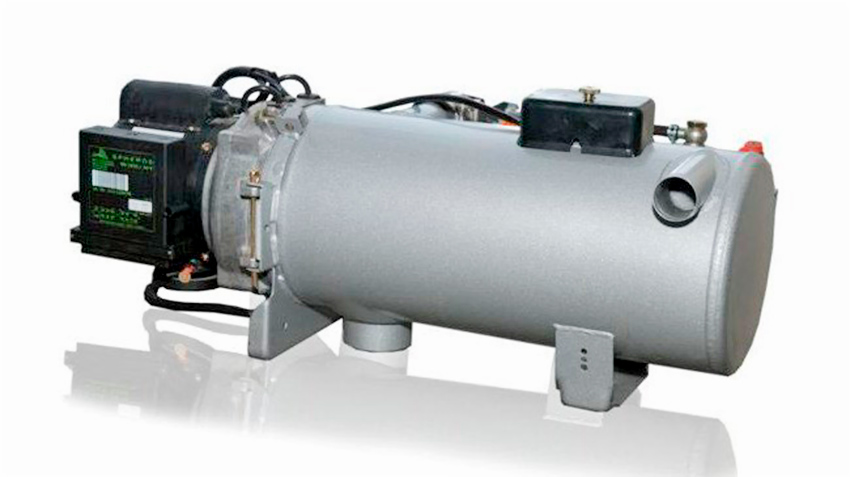
Autonomous heater Webasto Thermo 350 diesel makes the current Metropolitan buses are not so eco-friendly
So, "Base" indicates the average consumption of diesel oil heater about four liters per hour and the annual volume of emissions in the amount of 0.08 tons per year of NO2, 0,013 tons/year – NOx 0,0068 ton/year soot and 0,01069 t/a – SO2. It is believed that conventional diesel generators used by the road services of the city to repair the streets, about the same level of specific emissions. But "Base" indicates that in contrast to diesel generators operating intermittently and generally in small quantities, the heater electric bus in the cold season is open throughout the day schedule (from 6:40 until 22:00). On this basis, it argues that under the semi-annual cold season in Russia, "the army of the Smoking electric buses won't make a purer atmosphere of the capital" (frankly, it's still an exaggeration – emissions heaters electric buses is not so great and colleagues fall into frankly the alarmist rage – ed.).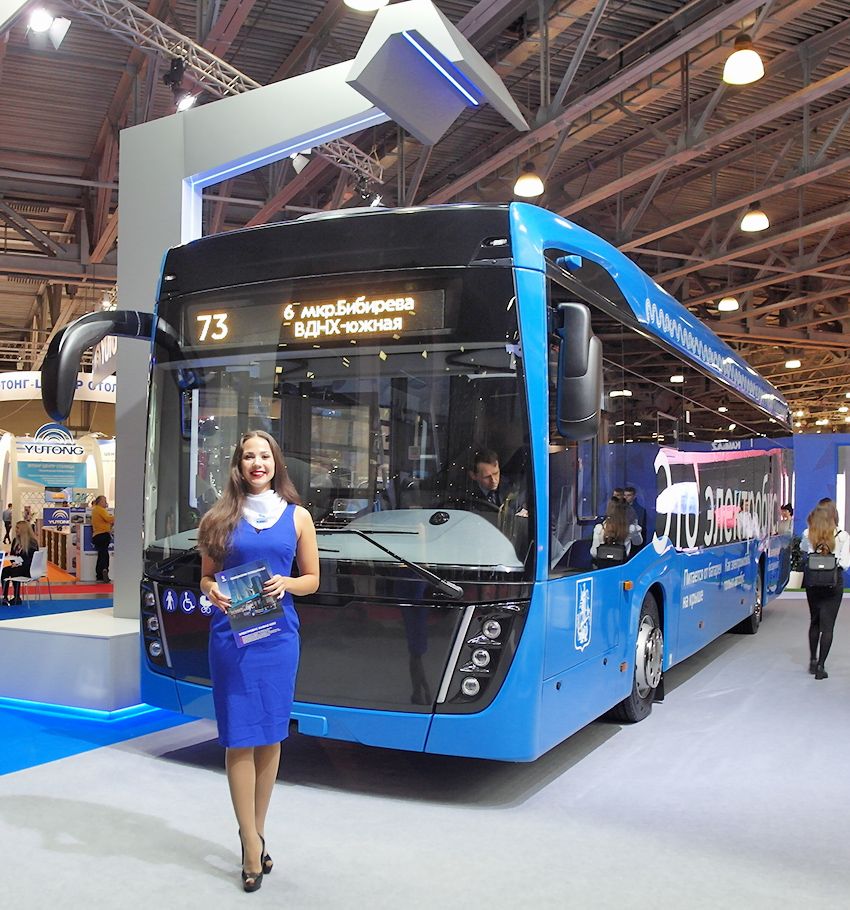
The buses KAMAZ-6282
The main beneficiaries of the capital purchase program of the buses act of domestic automobile companies "GAZ Group" and "KAMAZ"Group. The first belongs to Oleg Deripaska, the main shareholder and the second – "rostec" Chemezov. The first two tenders for the supply of 200 electric buses in ₽12.7 billion they divided among themselves. A third contract for 100 electric buses "Mosgortrans" made only with KAMAZ in the amount of ₽of 6.57 billion (because of the threat of sanctions antirossiysky "GAZ Group" had given the order to miss the bus). According to statements of officials of the Moscow mayoralty, these producers will be left without orders in the future, as the capital plans to purchase annually about 600 units of buses in the amount of ₽38 billion.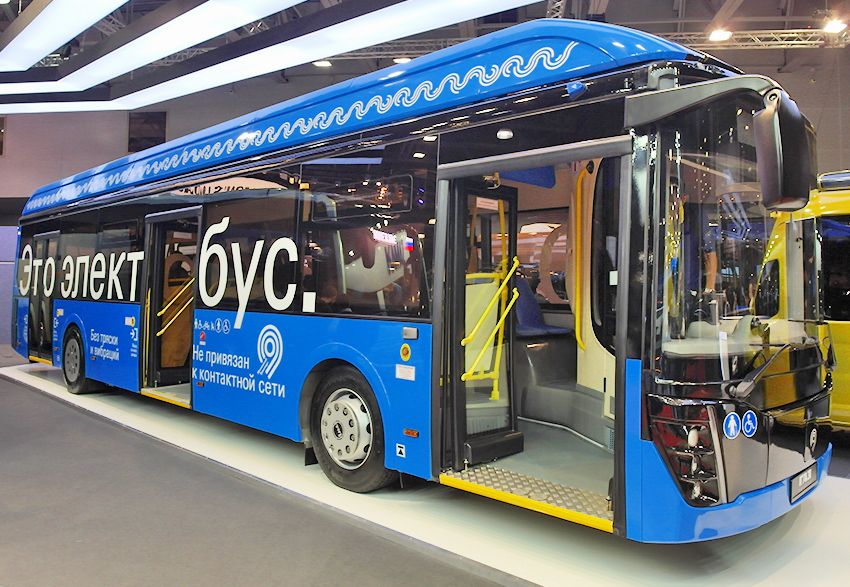
The GAS electric bus (LiAZ-6274 "Moscow")
In a press-service sue Mosgortrans questions about the report of the head of diptrans and efficiency of buses commented very simply: "the Price of diesel fuel is two times higher energy costs for electric buses. And rolling stock by buses creates a significant potential for the development of innovative sectors of the economy in our country."A more detailed answer Base on the environmental issue of buses was given in a press-service "mosgortransa": "around 90% of emissions of harmful substances in Moscow – from vehicles with internal combustion engine... Moscow with almost 15 million inhabitants has no right to be lagging city in environmental issues and can not save on health of Muscovites. In Moscow the first batches of buses provided by the system of additional heating based on the auxiliary diesel heater. A similar system is used in European buses, for example in Helsinki. Additional heater put in the first batch of buses, with the year 2021-2022 we do not plan to purchase more heaters, such as the battery capacity is sufficient to maintain a comfortable temperature in the winter" (this seems to be based on current soft Moscow winters, but I remember the cold and are great for -30°C – ed.).
Representatives of the Ministry of transport to request the "Base" the answer is not wished.
PS And yet, although "Base" and claims that emissions from the diesel heaters electric buses "totally negate" the environmentally friendly electric bus compared with conventional diesel bus, the emission of CO2 corresponding to the emissions of just a couple of diesel cars are still a fraction of the carbon dioxide emissions of a conventional diesel bus, even the level of Euro-5. Here's to gas the bus, a number of harmful emissions can be mapped.

Gas articulated bus LiAZ-62137 (Euro-5) it is successfully running routes in the capital
And I still think that the real concern about the ecology of Moscow in 2020-ies would be just the development of gasification of the bus fleet with the introduction of trolley buses as usual (2-5 km), and high (15-35 km) autonomy or other "of the electric bus with dynamic recharging", tE. effectively use existing contact trolleybus network charging directly in the movement of it (as well as the heating and ventilation of the cabin), but not from stationary charging stations on the route or in the Park, fairly self-contained and convenient, allowing to minimize the cost of the battery. At the current level of technology of batteries are the systems most effective at the cumulative environmental/economic impact (it is not a mere fabrication, as the result of a fairly serious study of one of the units Mostransavto). So that a clear write-off trolley "archive" as well as forced introduction of imperfect and expensive bus – this apparent "running ahead of the locomotive" which the current "fatliquoring Moscow" still can afford, but in the future it can result in very unpleasant consequences, for example in the form of a sharp slowing of renewal and the problem of disposing of (real, not contrived) of toxic spent batteries.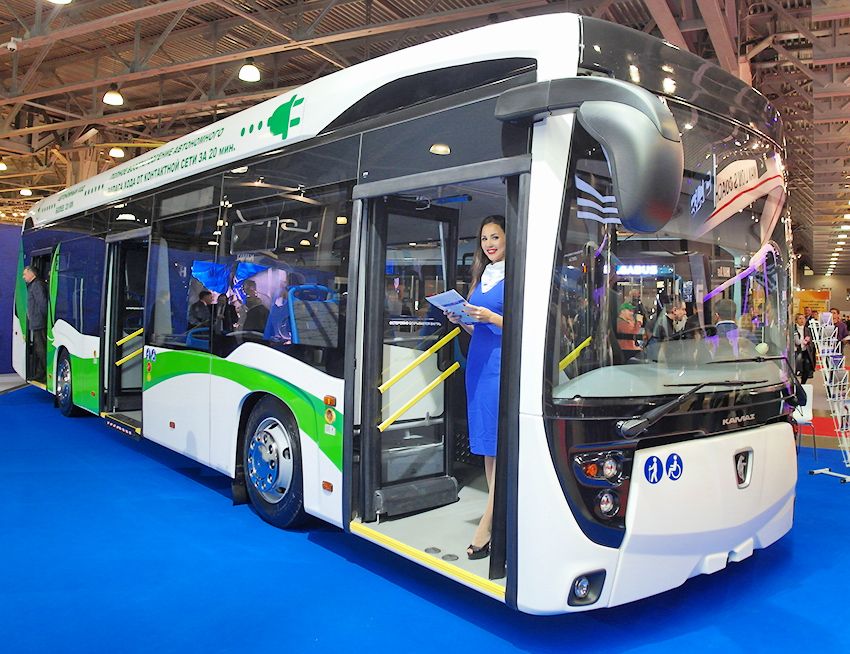
The same KAMAZ offers and trolley models with 62825 stand-alone course (charge from the contact network is only 20 min.)
.
|
|
|








